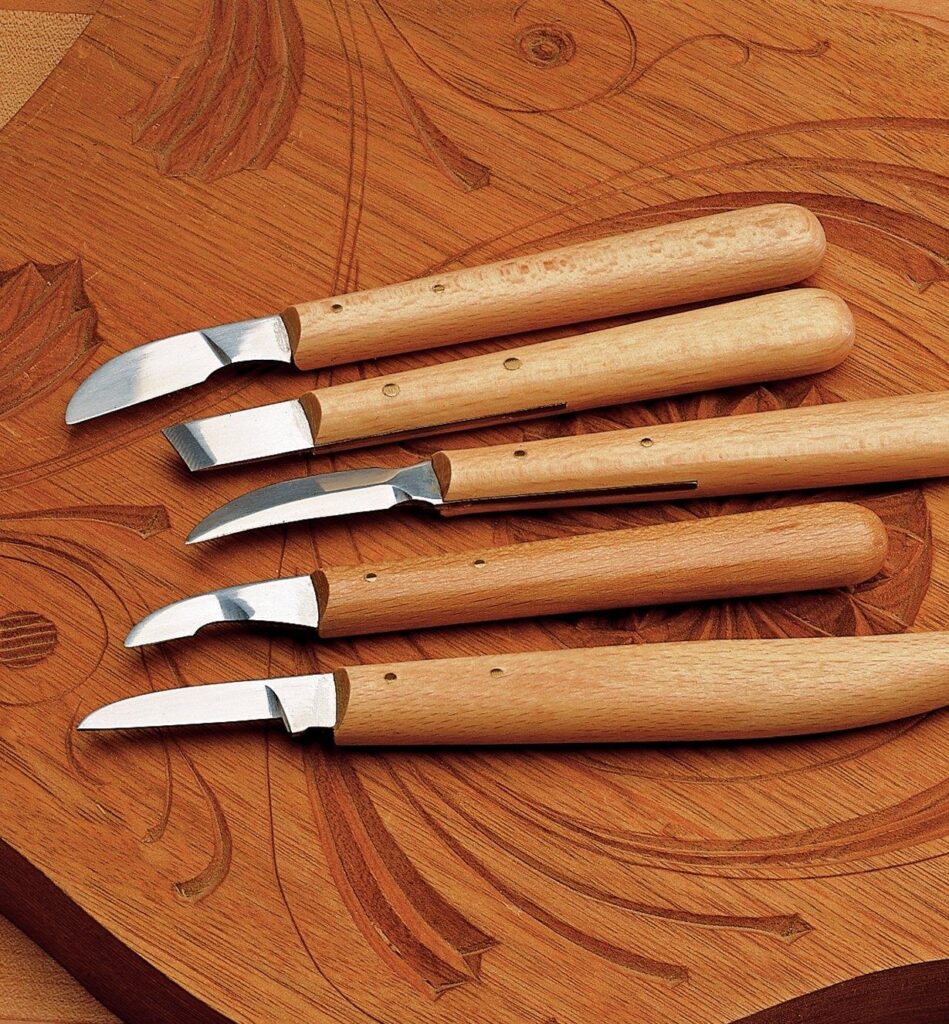Last updated on January 18th, 2024 at 06:17 am
If you’ve ever wondered how carving knives differ from other knives, you’re in the correct place. This article will explain what a carving knife is, its special qualities, and why it’s a must-have for any cook. Grab your apron and let’s explore carving knives!
What is a Carving Knife?
Slicing roasts, poultry, and hams requires a carving knife. Its long, narrow blade slices huge meat portions precisely and smoothly. Carving knives have these traits and uses:
Blade: Carving knives have long, thin blades, usually 8 to 14 inches (20 to 36 cm). High-quality stainless steel or carbon steel makes it durable and sharp. The narrow, tapered blade allows precision slicing without tearing or shredding the flesh.
Edge: Carving knives have a straight, sharp edge without serrations. This edge makes clean, even meat slices, improving dish presentation.
Point: Carving knives have sharp, fine points. While not as sharp as a paring knife, it helps with precise control when making initial incisions or guiding the blade into flesh.
Granton Edge: Some carving knives have hollowed-out grooves or dimples along the blade’s sides. The granton edge reduces friction between the blade and meat, making cuts easier and avoiding slices from sticking.
Handle: Carving knife handles are usually ergonomic for lengthy use. Ergonomic and full-tang, the blade extends into the handle for stability and balance. Depending on choice and durability, handle materials might be wood, plastic, or composite.
What is a Carving Knife Used For?

Besides slicing cooked meats, a carving knife has several uses. Let’s look at several carving knife uses:
Cutting Roasts and Poultry
Carving knives carve roasts and poultry. Its long, thin blade cuts meat evenly and smoothly. A carving knife helps you make elegant, thin cuts of roasted turkey or beef tenderloin.
Carving Ham
Ham carving requires a carving knife. Its large blade lets you slice ham thinly without losing flavour. A carving knife makes it easy to serve delicious ham slices at parties or dinners.
Smoking Salmon
Slicing smoked salmon is delicate. A fine cutting knife cuts thin, beautiful slices of sensitive, smoked salmon. For ideal smoked salmon slices, a carving knife is essential whether making brunch or an appetizer.
Watermelon and Large Fruit Cutting
Have you struggled to slice a giant watermelon evenly? Carving knife saves! A carving knife readily slices watermelon rinds with its long blade and pointed tip. For pineapples, melons, and other large fruits, a carving knife speeds up the process.
Cut Bread
Besides carving meat, a carving knife may slice bread. Its large, sharp blade cuts crusty loaves and soft bread easily. A carving knife slices bread for sandwiches, toast, and charcuterie boards.
Precision Vegetable Cutting
Carving knives chop veggies precisely. Its tiny blade makes julienne and chiffonade cuts easy. For precise chefs, a carving knife is essential for chopping herbs and garnishing vegetables.
Questions (FAQs)
Can a carving knife slice cooked vegetables?
Yes! A carving knife can also slice cooked vegetables due to its sharp blade and precision handling. A carving knife helps you chop roasted potatoes, steamed carrots, and grilled zucchini evenly.
Do carving knives cut bones?
Carving knives cannot cut bones. Slicing cooked meats and veggies is its specialty. Use a boning knife or cleaver to chop bones.
Can a cutting knife fillet fish?
A carving knife can fillet fish in a pinch, but it’s not ideal. Filleting knives, with their thin, flexible blades, are excellent for delicate fish skin and bone removal. For precision and control, get a filleting knife if you fillet fish often.
Carving knife care: how?
Carving knives need adequate care to last and operate well. After each usage, wash and dry the knife. Avoid soaking or cleaning with harsh products. For safety and sharpness, place the carving knife in a knife block or sheath.
Carving knives for beginners?
With caution and practice, beginners can use carving knives. To cut precisely, its long, narrow blade needs control. Start with smaller cuts and work up to roasts or chicken. You’ll get better at cutting knives with practice.
Do carving knives vary?
With caution and practice, beginners can use carving knives. To cut precisely, its long, narrow blade needs control. Start with smaller cuts and work up to roasts or chicken. You’ll get better at cutting knives with practice.
Conclusion
Finally, every chef needs a carving knife. It slices roasts, poultry, and ham precisely and easily because to its long, narrow blade and sharp edge. A carving knife may also cut bread, huge fruits, and vegetables precisely.
Understanding a carving knife’s versatility and use can improve your cooking and presentation. Next time you cook a meal or host a dinner party, use your carving knife with confidence.
